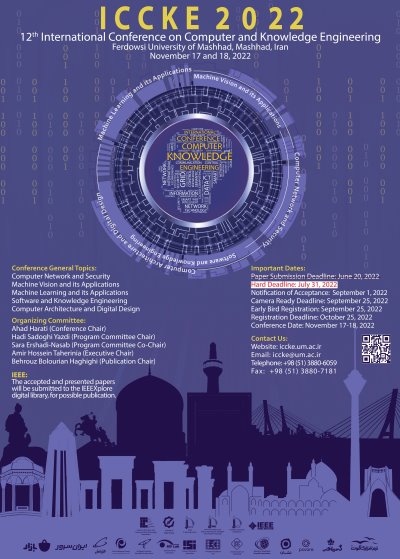0% Complete

Authors :
Keywords :
Abstract :
List of archived papers
Reihaneh Nikouei - Mohammad Taheri
Mahdi Nasrollahi - Reza Shami Tanha - Mohsen Hooshmand
Faezeh Alizadeh - Mohammad Khansari
Dennis A/L Mariadass - Ervin Gubin Moung - Maisarah Mohd Sufian - Ali Farzamnia
Maria Salehpanah - Jafar Tanha - Zahra Jafari - SeyedEhsan Roshan - Sajad Rezaei
Rahele Mohammadi - Mahmoud Naghibzadeh - Abdorreza Savadi
Dara Rahmati - Mohammad Hadi Foroughi - Ali Bagherzadeh - Mehdi Foroughi - Saeid Gorgin
Samin Zare - Mehran Yazdi
Saeed Sarbazi-Azad - Ahmad Akbari - Mohsen Khazeni




